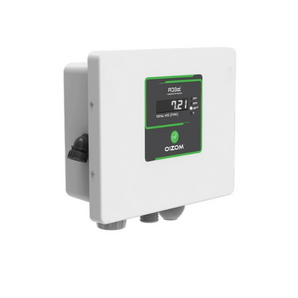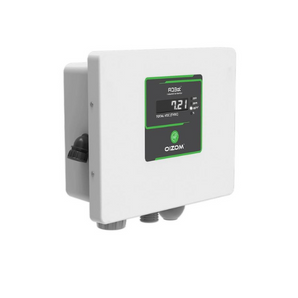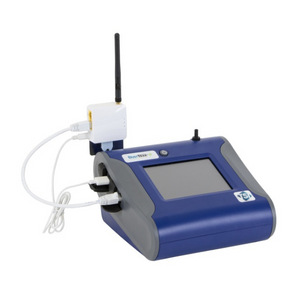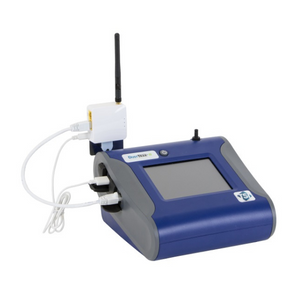Dust monitoring is no longer just a good practice; it has become a necessary part of managing modern construction projects, especially in urban environments. With so many active sites located near homes, offices, schools, and healthcare facilities, the release of airborne particles can quickly escalate from a technical issue to a public complaint or worse, a regulatory violation.
That’s why construction companies are increasingly turning to real-time dust monitoring solutions to stay compliant with environmental standards, manage health risks, and reduce conflict with nearby communities. In this blog, we’ll explore how dust monitoring works, why it matters, and how it’s transforming the construction industry.

What makes dust monitoring so important?
Construction activities, especially demolition, earthworks, and vehicle movement, are a significant source of particulate matter in the air, particularly PM10 and PM2.5. These tiny particles are harmful to both environmental and human health, capable of entering the lungs and bloodstream, and contributing to respiratory and cardiovascular diseases.
Without proper dust monitoring, there’s no way to know whether the levels of these particles are within safe and acceptable limits. More importantly, without real-time data, there’s no way to respond quickly when emissions exceed those limits—which can happen with a change in weather, a shift in activity, or a simple operational oversight.
How real-time dust monitoring works on construction sites
Unlike passive monitoring methods, which take samples over time and send them to a lab, real-time dust monitoring provides immediate, actionable data. Devices like Dustroid are installed at strategic points along the site perimeter or within active zones to measure particle concentrations in the air continuously.
Dustroid
For teams seeking high-frequency insights and instant response capabilities, the Dustroid Ambient Dust Monitor is a powerful tool that brings smart monitoring directly to the jobsite. This device continuously measures PM1, PM2.5, PM10, and TSP in real time, making it exceptionally valuable in projects located near sensitive areas such as residential blocks, schools, or commercial centers.
One of the key advantages of Dustroid is its connectivity, offering cloud integration, remote data access, and real-time alerts. This means that environmental managers and site engineers can track dust levels live and act immediately if thresholds are exceeded, even from off-site.
In a highly regulated construction ecosystem, this kind of visibility is essential not just for meeting requirements but for staying ahead of potential complaints and building trust with the surrounding community. Whether deployed at site boundaries or near high-emission zones within the worksite, Dustroid turns dust data into decision-making power.

Benefits of dust monitoring in urban construction
Immediate Risk Response
One of the most valuable benefits of real-time dust monitoring is the ability to act quickly. If levels spike during excavation, for example, site managers can pause activity, increase water suppression, or deploy additional barriers to reduce emissions.
Community Trust and Complaint Management
Air quality complaints from nearby residents can delay projects and trigger investigations. With reliable dust data, companies can respond with facts instead of assumptions. Being able to show you’re monitoring actively often defuses tension and shows accountability.
Safer Work Environments
Dust doesn’t just leave the site, it circulates within it. Monitoring helps protect workers, especially those near cutting, drilling, or transport operations. High PM2.5 levels inside the site are just as important as what's leaving the perimeter.
Better Project Planning and Reporting
By analyzing trends in dust levels over time, companies can plan high-emission activities during low-risk windows (like early mornings or low wind days). This data also supports transparent environmental reporting, which is increasingly expected in tenders and audits.
The construction future is linked to air quality responsibility
As cities grow upward and outward, the pressure on construction companies to manage dust pollution responsibly will only increase. The government’s push for sustainable urban development is aligned with higher expectations for compliance, data-driven monitoring, and environmental accountability.
Projects that fail to take dust monitoring seriously will not only face operational risk, but may also lose credibility in a city that’s looking to lead the way in smart, safe, and livable urban design.
Conclusion
In regulated cities, with high-density construction environment, dust monitoring has become a non-negotiable part of responsible project delivery. It’s not just about goverment requirements, it’s about protecting your team, your neighbors, and your company’s ability to operate with integrity.
Whether you're managing a high-rise in the CBD, a public infrastructure project, or a private development near a residential zone, real-time dust monitoring ensures you stay ahead of the risks, not just react to them.
With the right equipment, supported by intelligent data platforms and expert integration, construction firms now have the visibility they need to build with confidence and compliance.








